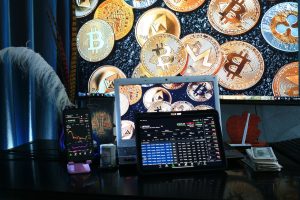Forex trading, like every other financial activity, involves some measure of exposure to drawdowns. That’s why consistently profitable forex traders mitigate their investment risks through analysis, planning, and orders like taking profit (TP) and stopping loss (SL). These basic strategies are effective, but traders must implement advanced risk mitigation strategies to maximize their earnings further.
Importance of Risk Mitigation in Forex
Traders often consider risk mitigation to be reducing the risks associated with investing funds. However, many traders don’t realize risk management can help them maximize their trades through careful execution and leverage. Risk management also helps traders manage their capital by honing their management skills.
One of the best strategies for risk management in forex trading is planning. Risk management begins with planning the portion of trading capital for each trade, the entry and exit prices, and the risk-to-reward ratio. Planning helps traders work within their risk appetite and comfortably flow with the market.
Backtesting and Trade Planning
Backtesting involves analyzing a strategy over historical price and market data. When backtesting a strategy, traders assume and implement similar market and trading conditions to determine the precision. Backtesting helps traders gain confidence, avoid mistakes, and fine-tune the plan. As a risk mitigation strategy, backtesting is in a class of its own, as it provides a safe way to mitigate risks without facing live market conditions.
Trade planning brings traders’ decisions to actionable steps to eliminate inconsistency and have a plan for trading and managing price volatility. Every plan should be based on the trader’s end goals, objectives, skills, and experience. “Plan your trade and trade your plan” is a common saying in trading communities that captures the concept of trade planning as a risk mitigation strategy.
Experienced forex traders never chase trades; they allow the market to enter critical zones and execute trades when certain conditions are fulfilled. In this way, they retain a measure of control over the outcome of their trades, allowing only the market forces to be the unknown variable.


Portfolio Diversification
Over 70 currency pairs are available for forex trading on most brokers, ranging from high volatility to low volatility pairs. Volatility is necessary for price movement; traders only need to be on the right side to profit from buying or selling currencies. Portfolio diversification involves spreading a trading capital over different currency pairs to reduce the potential risk and increase the potential earnings since forex pairs move at different paces.
Diversification is common among stock and cryptocurrency traders, but even forex traders can invest in different pairs to get the best returns. Traders, for instance, can buy and hold low-volatility currencies for a more extended period while they trade high-volatility pairs in the short term. The essential aspects of portfolio diversification are calculating potential returns and the risk-to-reward ratio, allocating funds, and strategies such as cost averaging. This strategy gives one of the best risk-adjusted returns when done right.
Advanced Order Types
Trading orders are order types for selling or buying assets in various markets. They effectively manage trades, especially for automatically taking a profit or cutting losses. There are three categories of advanced orders for forex risk mitigation:
Limit Orders
Limit orders ensure that trailers are bought or sold at a determined price or better; they won’t be triggered when the price is lower or higher than the minimum or maximum prices, respectively. Limit orders are great for risk mitigation because they help traders avoid risky trades.
SL & TP
These are used to take profits or mitigate losses automatically.
Dynamic Stop Loss
There are three types: time-based SL, volatility-based SL, and trailing stops. Dynamic stop losses help traders to lock in profits, follow price movements, and reduce losses due to sudden volatility.
Most forex brokers provide these advanced orders. Traders can edit parameters to suit their risk appetite and manage trades according to their plans. They are also deployable on expert advisors (trading robots).
Psychological Management
Psychological and emotional management are essential parts of forex trading and are soft skills that traders never outgrow. The forex market is influenced by traders’ sentiments (Fear & Greed); traders are up against millions of other traders looking to profit from the same instruments. Emotional management helps traders make trading decisions based on market data, not feelings.
Traders who can manage their emotions have leverage in mitigating risks. They are not prone to chase profits, revenge trading, or overtrading. Although traders must take calculated risks, psychological management helps them stay within acceptable personal limits.


Currency Hedging and Position Sizing
Hedging is a widely used strategy across the financial sector. Traders in every market use hedging to protect against volatility and inflation. Hedging in forex trading involves opening opposite positions to running trades to reduce exposure to volatility. It is usually a short-term strategy to protect traders’ capital. Forex hedging is typically done on correlating pairs (currencies generally moving in the same or opposite directions).
Position sizing is a core forex trading skill traders must master for successful risk mitigation. It involves calculating the exact units of currencies bought or sold per trade and is often combined with calculating the SL or TP distance. Currency hedging and position sizing are effective for managing trading risk and helping traders stay accountable for their trading plans.
Managing Risk To Maximize Returns
Advanced forex risk management strategies help traders get better returns in the forex market while minimizing their risks. The strategies shared in this article are practical and will help traders when appropriately implemented. Traders must adapt risk management strategies to fit their trading plan, capital, and market since varying market conditions and skill level impacts the outcome.






